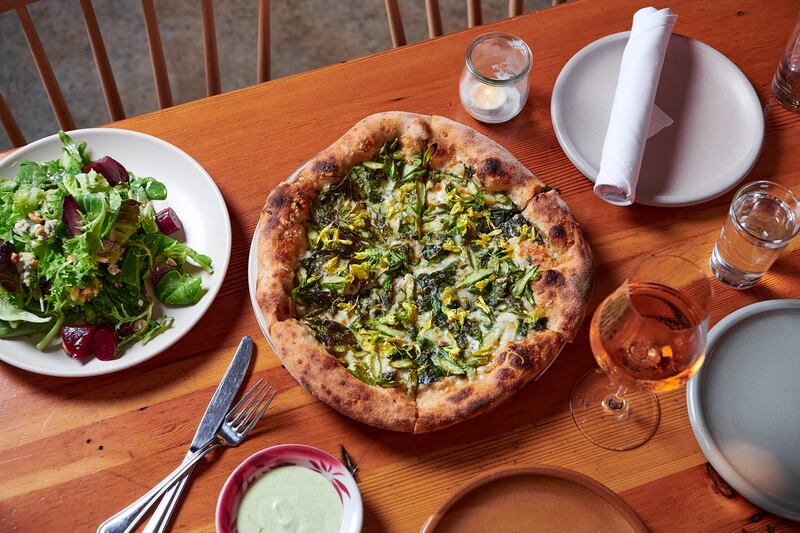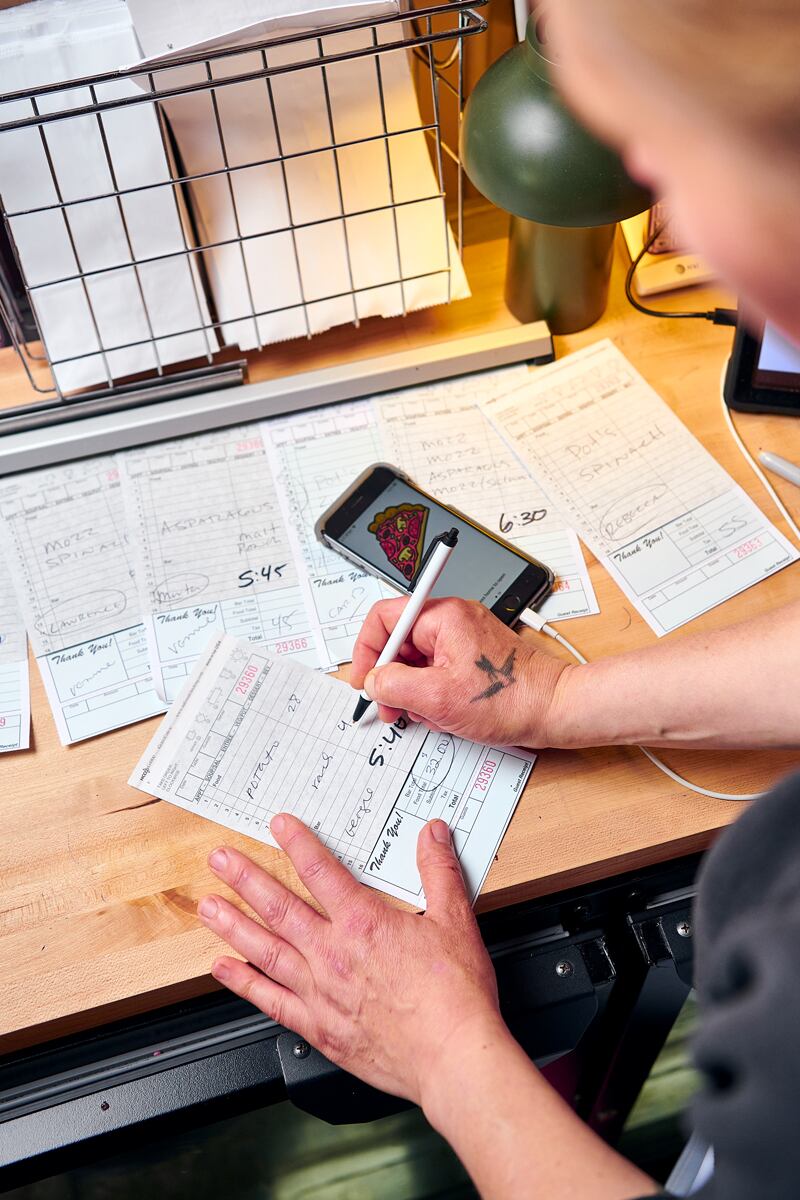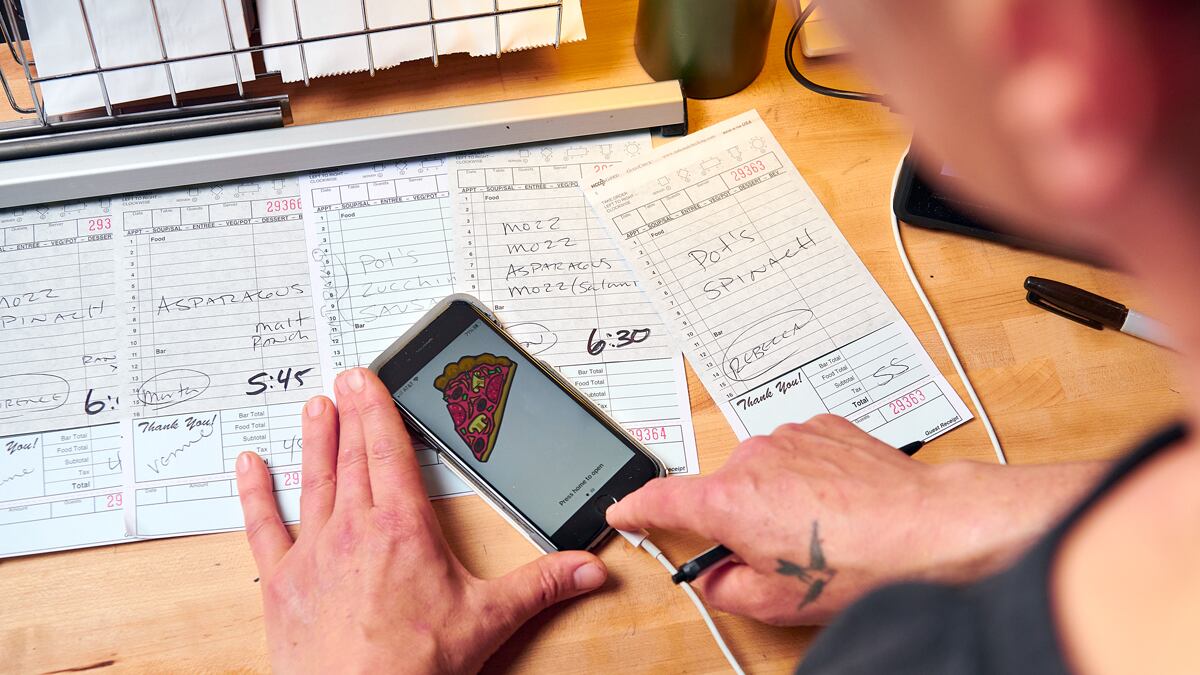Two summers ago, following the initial pandemic online ordering boom, local restaurants and organizations like the Portland Independent Restaurant Alliance fought tooth and nail to reduce third-party delivery app fees. Companies like Uber Eats, Grubhub and Caviar were charging businesses as much as 30% of the total cost of an order—an amount restaurant owners said was eating into their profits during an already challenging time for the industry. Relief came when the Portland City Council passed an emergency ordinance that temporarily capped app commissions at 10%. However, that’s set to expire at the end of June.
Extreme growth in demand for takeout has cemented third-party apps in many restaurants’ operations, but some have managed to sidestep digital delivery services by turning to creative alternatives.
Lovely’s Fifty Fifty was forced to close its dining room in March 2020, along with every other restaurant in the state. Just days later, co-owner and chef Sarah Minnick decided to serve pizzas to go three nights a week, new territory for her North Mississippi Avenue pizza-and-ice cream haven. She cobbled together an ordering system with what was on hand: an old iPhone, which became the “pizza phone;” her personal Instagram account, which displayed the rotating menu; and Venmo, which served as the contactless payment method. More than two years later, the system hasn’t changed.

“Text your orders to the pizza phone,” read the Instagram posts, followed by a list of pies flaunting local vegetables and hard-to-find imported cheeses. What started as a friendly—if not quirky—way to get pizza to the people in unprecedented times has persisted. Presumably, the business would have outgrown its charmed mix of repurposed technologies; perhaps it would have streamlined things, sorted out the details. Comments rolled in on the weekly posts: “You know there are apps that automate this all for you.”

Those apps—which offer everything from bare-bones online ordering systems to fast, automated delivery and marketing packages—also stand to threaten restaurants’ famously thin profit margins. When COVID hit, third-party delivery became the middle man between everyone and the local restaurants they were desperate to repatronize. In turn, what was once a small stream of revenue before the pandemic became their sole means of staying afloat. And with apps taking a significant portion of those sales, circumstances forced some restaurants to operate at a loss.
Cities across the country responded by capping delivery-app commissions. Portland’s cap aims to ease “the financial burden on struggling restaurants while not unduly burdening delivery platforms.” But online ordering platforms have pushed back. Grubhub’s website, for instance, argues that commission caps allow restaurants to “access delivery, marketing and other services at artificially low prices.” Portland’s cap was temporary from the outset, “while restaurants are unable to provide unrestricted dine-in service.” But perhaps COVID shed light on a problem that had not yet fully surfaced.
The delivery-app market consolidated significantly during the pandemic. By July 2020, the Big Three—DoorDash, Uber Eats and Grubhub—owned 97% of the U.S. market. Commissions grew under the hegemony to an industry standard of 30%, a rate capable of funding the services both customers and restaurants want, but one that also exceeds the average restaurant’s 5% profit margin. And despite app companies’ soaring revenues, they’ve long been criticized for their inability to turn a consistent profit.
The knee-jerk reaction may be to boycott apps, though it’s difficult to imagine dropping the habit of ordering through them as quickly as we picked it up. Many, including Minnick, don’t think apps should be shunned. She loves her pizza phone (“it’s literally the best!”) but is pragmatic about the larger picture: “Everyones wants it; they want to be able to order on DoorDash. So the question is: How do we make it work better? How can we make it work for us?”
Fixed regulations are an obvious answer. Both New York City and San Francisco implemented permanent caps of 15% per delivery, but many contend that ceilings on commissions can actually harm restaurants.
“Price controls can lead to increased costs on customers, which can reduce orders for restaurants,” says Briana Megid, a representative of DoorDash.
Another argument is that caps limit what apps can do.
“Services go well beyond delivery,” says Grubhub spokeswoman Liza Dee, “and price controls limit every restaurant’s ability to opt into marketing services that boost orders and generate added revenue.”
Given that the current 10% commission rate is unsustainable, coupled with the cap expiration on the horizon, it’s hard not to wonder: Is third-party delivery that allows all parties to profit even possible?
Apps are expensive for restaurants, but they’re also capable of helping them. Storefront, a platform created by DoorDash, enables restaurants to post their menus online and easily accept digital orders—removing the need to set up their own online platforms. It charges only 30 cents per order and a Visa processing fee, and Storefront advertises the option of passing on all delivery expenses to the customer (a $3.99 fee plus 10%). Transferring costs to the consumer is one way to make the system work, but faced with additional expenses, like tips for the restaurant and the driver, some customers may be priced out.
Some apps’ latest move is to implement a tiered system in which restaurants choose from escalating commission percentages that correspond with a range of marketing benefits and an expanded delivery radius. Since introducing tiered systems, DoorDash has continued operating in Portland with a 10% fee, but commissions will rise to anywhere from 15% to 30%, depending on a restaurant’s chosen tier, when the cap expires.
After relying for years on third-party apps to connect to the restaurant industry, most people seem to agree on only one thing—that there is no magic fix. The power of Lovely’s pizza phone is undeniable, but certainly not the answer for everyone. Traveling back to a time when we all picked up our own takeout is not a feasible solution either. And because business owners seem to have their own preferences when it comes to delivery, perhaps getting food to customers requires as many different delivery systems as there are restaurants.
